All about the Chinese date and its cultivation
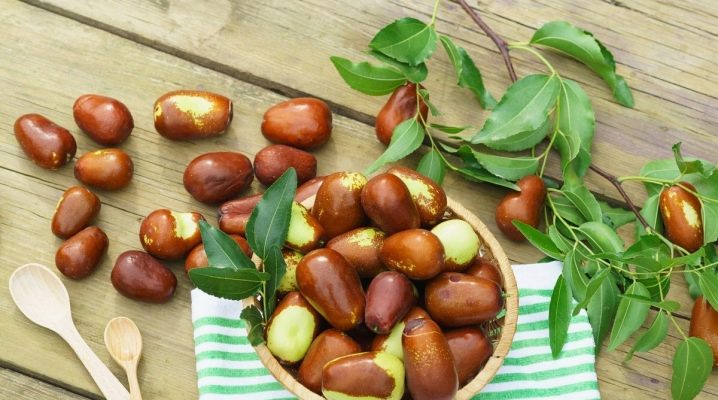
Plantings of the Chinese date, also known as ziziphus, appeared in the local areas of the central European zone not so long ago. Lovers of exotic plants have appreciated the decorative qualities of the exotic shrub, as well as the unique taste and vitamin composition of its fruits.
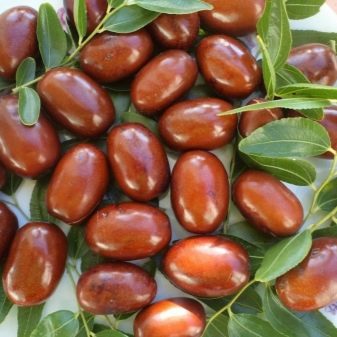
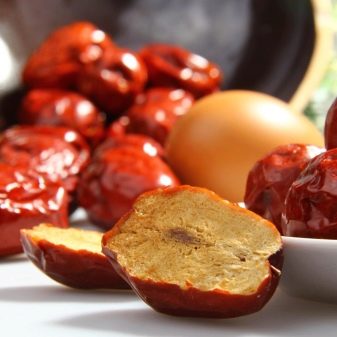
general description
The homeland of the present zizyphus is the subtropics of India and China, where the tree is widespread in the wild and in some places gains 10 meters in height. In cold climatic zones, the Chinese date slows down development, usually growing to a 2-meter mark.
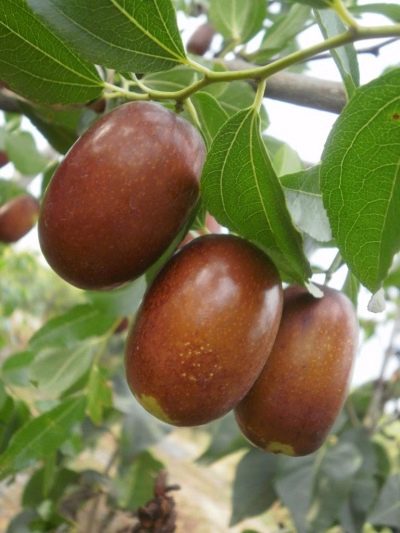
In some areas of Asia, a tree with small, elongated sweet-tasting fruits is called unabi or jujuba, a type of red date. In addition to resistance to dry periods of the year, shrub or woody thickets of plants can withstand significant drops in temperature in winter, down to -18 degrees. In the first years after planting, it is better to cover young trees for the winter so as not to lose them at all. Breeders of several countries, including China, Tajikistan and Moldova, are working on the development of frost-resistant cultivars of Ziziphus.

After a harsh winter, trees can be delayed with the onset of an active growth period, and gardeners rush to cut them down, believing that they died from frost. But even in those cases when the above-ground part of the tree freezes, there is still hope for its revival from root shoots.
The shiny green leaves are elliptical and are attached to the branches with short, sturdy petioles. The flowering period of unabi trees usually occurs during June, but with a delay of 1-2 weeks in cold climates. Flowers do not differ in noticeable size and beauty: these are small greenish-white inflorescences without a special smell. Zizyphus belongs to monoecious tree species and does not require a large number of pollinating insects to set fruit.
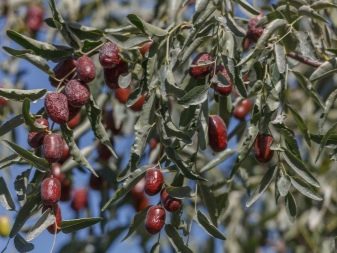

The fruiting period of trees begins 3-5 years after planting in open ground.
Of particular interest are the juicy dates that grow abundantly on the tree. Inside the fruit is an oblong drupe surrounded by sweet and highly nutritious pulp. Chinese dates contain significant amounts of vitamin C and other beneficial minerals. Unripe date fruits are olive green, and when ripe, the skin becomes brownish in color. Ripening of common zizyphus occurs in autumn, and the harvest must be selectively harvested due to its uneven ripeness. During ripening, spots and patterns of unusual shapes appear on the surface of dates. This process is an interesting sight.
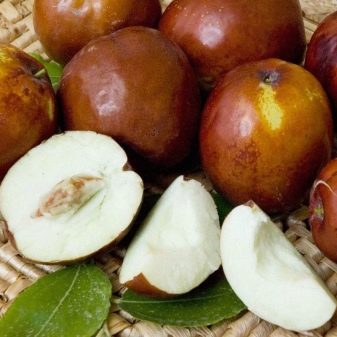
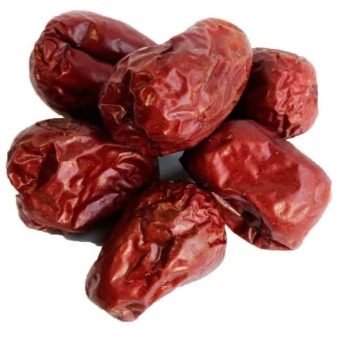
Unabi fruits can be eaten when they are not fully ripe. Green dates taste like a sweet and sour juicy apple. Fully ripe fruits become dry, sweet and soft, they can be used to prepare compotes, jam and homemade marshmallows.
Most often, ziziphus is grown in home gardens for fresh or dried consumption.
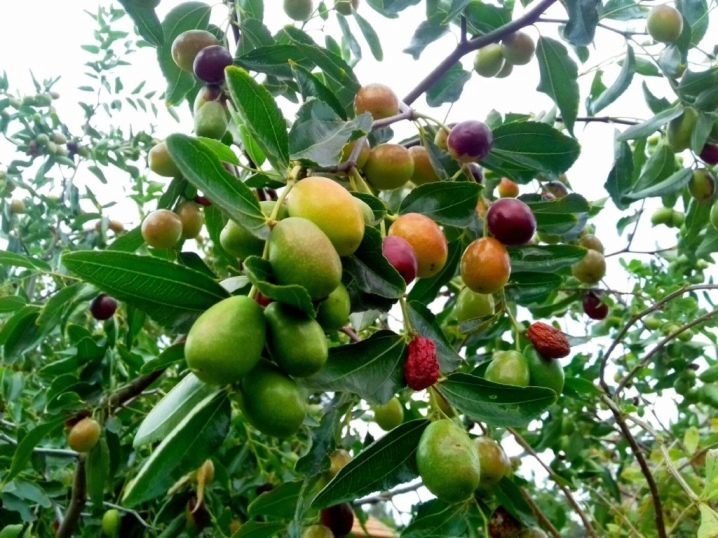
Landing
For the cultivation of the garden culture of the Chinese date, several of the most common varieties are used. They are selected depending on the timing of ripening and the size of the fruit.So, for the northern regions of the middle zone of the Russian Federation, early maturing species are more suitable, and in the south, varieties of late and medium ripening periods can be grown.
There are several proven and well-proven types of selection.
- Early ripe "Vakhsh" with cylindrical dates of warm chocolate shade and high yield of trees.
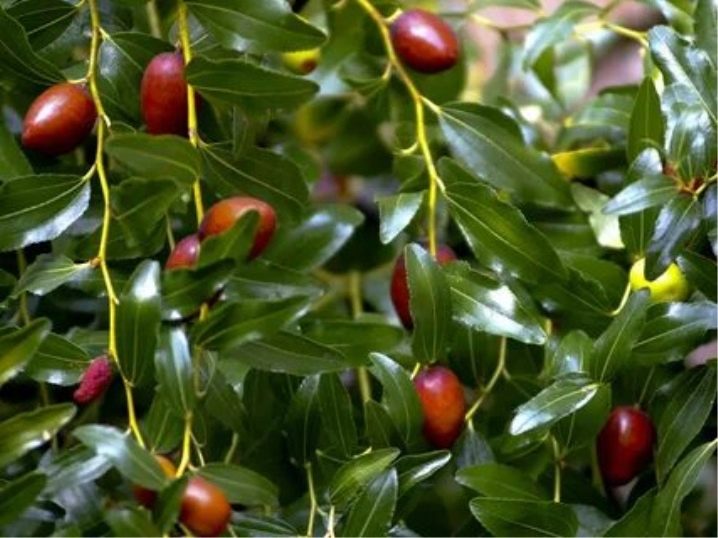
- Chinese date "Candy", which forms low, rounded shrubs with abundant yields of medium-sized, but very juicy and sweet fruits.
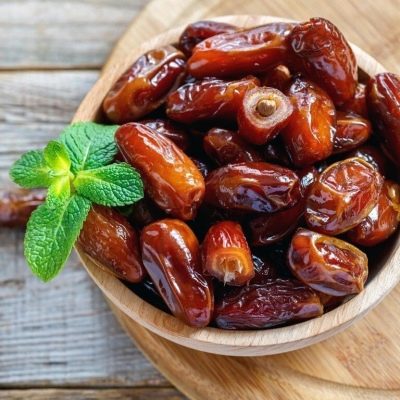
- The unabi variety called "Tavrika" is also widespread.yielding dates of medium size, ripening in early October. Differs in high productivity and frost resistance.

- "Mori Jer" tolerates severe frosts down to -25 degrees. Large fruits weighing up to 35 grams ripen in September.
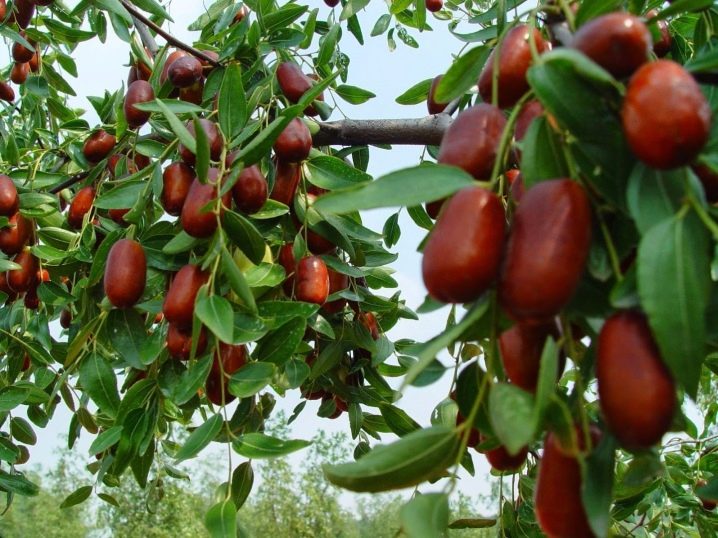
- Branched tall trees Chinese variety "Ta-yang-tszao" give large fruits in the shape of a pear, in which the seeds are very small or completely absent.
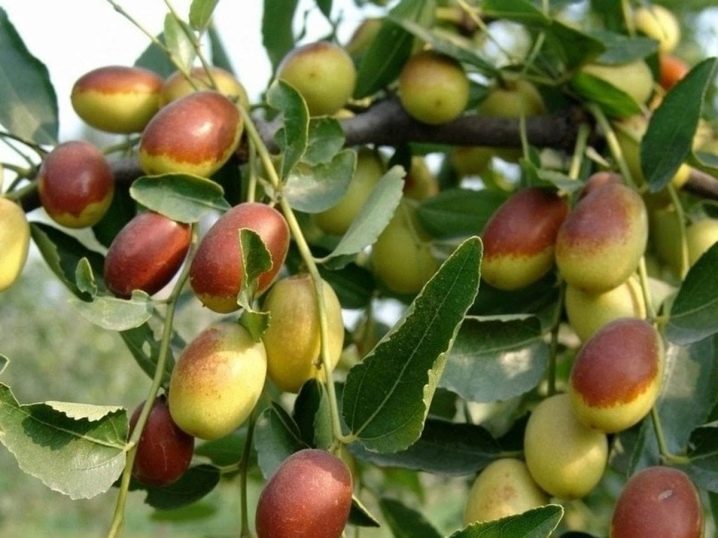
All varieties of zizyphus prefer sunny areas with protection from the north wind. The Chinese date is more resistant to direct sunlight and heat than to slight shading of its crown. The growth and flowering of trees may stop or slow down when the thermometer reads below +15 degrees.
The plant does not tolerate excess moisture and shallow groundwater at the planting site.
In its natural environment, Ziziphus grows well on loose mountainous slopes, and soils consisting of clay with high acidity are not suitable for its normal development.
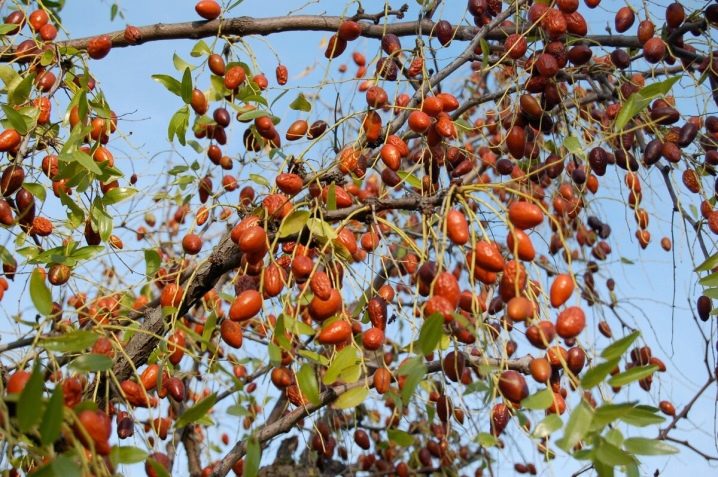
When the snow cover completely disappears in the spring, you can purchase seedlings and start planting them. The plants are pre-soaked in a solution of potassium permanganate or growth stimulant. To root the ziziphus in the selected area, you need to dig a hole about 50 cm wide, on the bottom of which a small mound of nutrient soil with humus should be poured. The roots of the tree must be distributed along the bottom and covered with loose earth. The root neck of the trunk should be visible above the surface of the planting hole. The young sprout should be fixed in place using a peg.
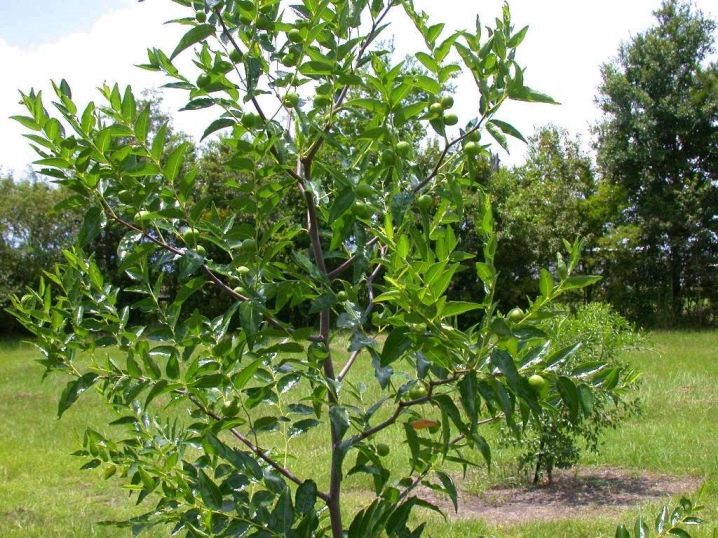
Care
Ziziphus trees are planted in personal and summer cottages, mainly to harvest tasty and healthy fruits. Trees respond well to proper growing methods, delighting growers with abundant nutritious dates and fresh foliage. In the regions of southern Europe and the Black Sea region, they grow in hot summer conditions, which implies the need for watering cultivated plants. In the north of the European plain, mild summers prevail, but winter frosts pose a threat to the thermophilic varieties of Ziziphus, so the seedlings need additional protection.
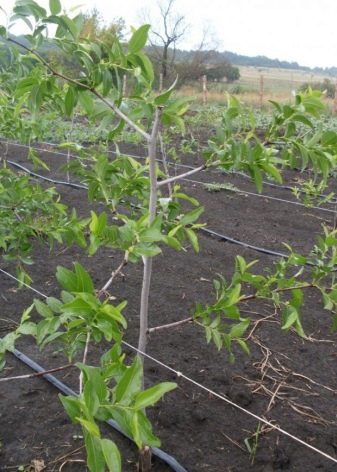
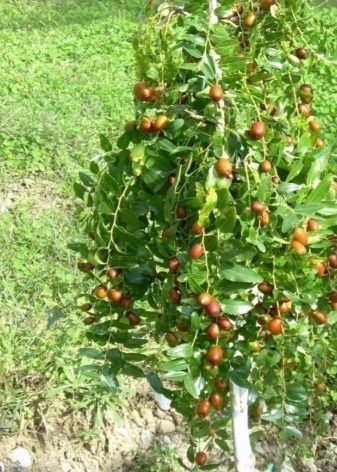
In warm regions where unabi trees grow, they should be watered once a week, moistening the soil to a depth of at least 60 cm. In temperate climates, 2 waterings per month are enough. Seedlings and young trees grow slowly at first, so watering and weeding of the root zone from weeds should be done as needed. It is useful to cover the trunk circle with rotted plant waste and other types of mulch.

The first seasonal feeding of trees is done in early spring, when the snow has completely melted. A balanced mineral complex for them is a mixture of half a bucket of rotted compost, 2 tablespoons of saltpeter, a spoonful of potassium with the addition of 50 grams of superphosphate. This amount of dry dressing should be scattered over an area of 1 sq. meter under the tree trunks.
At the beginning of life, the zizyphus adapts to new conditions and therefore little remains for the growth of its strength. However, from 3-4 years old, the tree begins to develop rapidly and give a good growth of shoots. Flowers can appear in spring even on very small trees, but the ovaries fall off immediately.
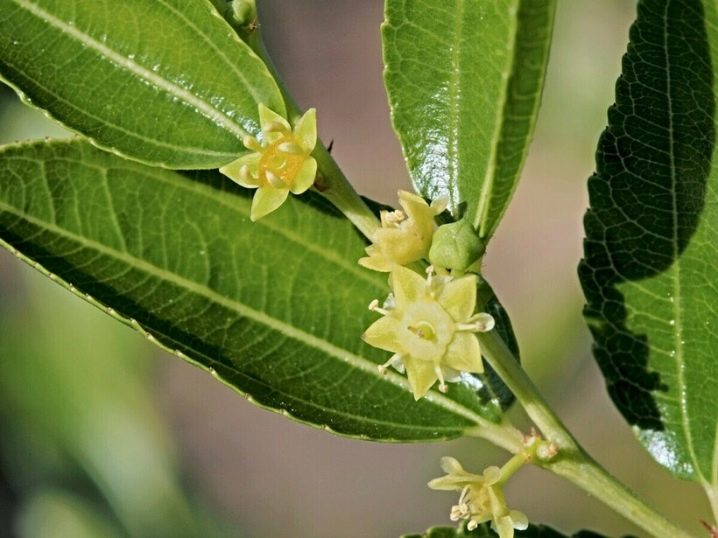
Despite the high degree of frost resistance of some unabi varieties, plants still die even in mild climates. The reason may not even be in a too harsh winter, but in a cool and rainy summer, during which the plant slows down and the shoots do not have time to ripen. Sometimes, after the death of the aboveground part of an adult tree, the root system remains viable and restores the growth of young shoots. In the north, low shrubs of ziziphus feel good in greenhouses or winter gardens, some of the walls of which are adjacent to the building.
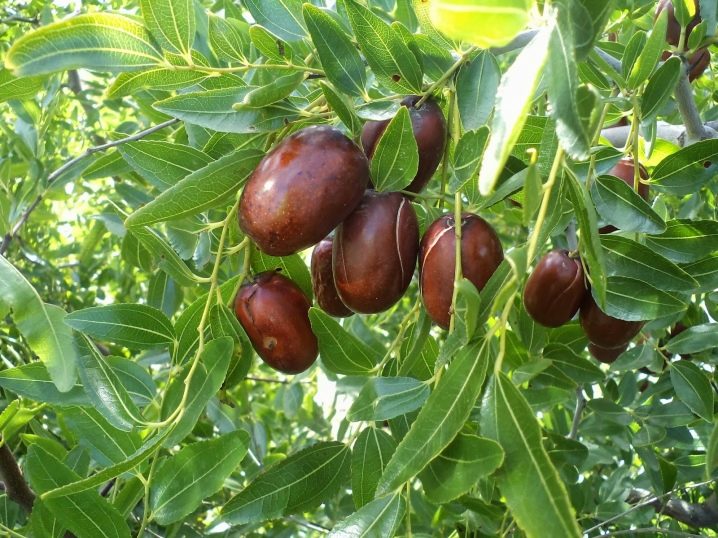
Date pruning is done periodically, depending on the growth rate. In northern climates, trees are simply thinned out to renew them and provide more access for air and light. In the south, low unabi shrubs are cut in the shape of a bowl, leaving 4-5 main branches.
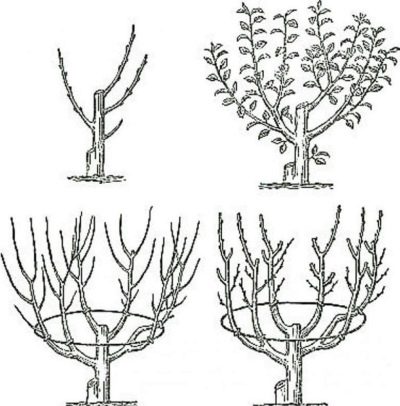
Reproduction methods
When cultivating a Chinese date in an open field or greenhouse, gardeners use several methods.
Layers
The method consists in the fact that the lowest shoots are fixed to the ground with wooden or metal studs. After that, the areas where the stems adjoin to the soil surface are covered with earth and watered abundantly.
For the formation of a good root system, it is necessary to constantly monitor the moisture of the cuttings. By October, a separate tree appears with an independent root system, which can be dug up and transplanted in the spring.
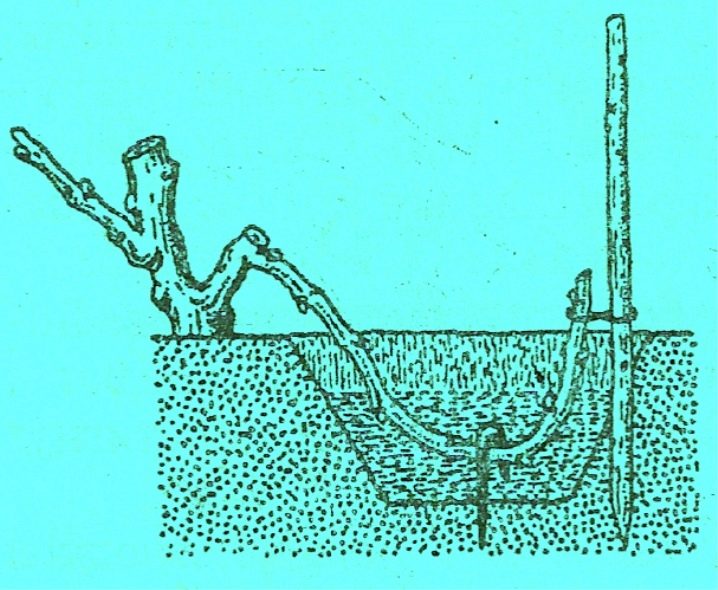
Root shoots
Here, young shoots of roots are used, which are separated from the mother tree in spring for transplantation. Abundant growth in the root zone is suitable for reproduction, preserving the genetic characteristics of an adult tree.
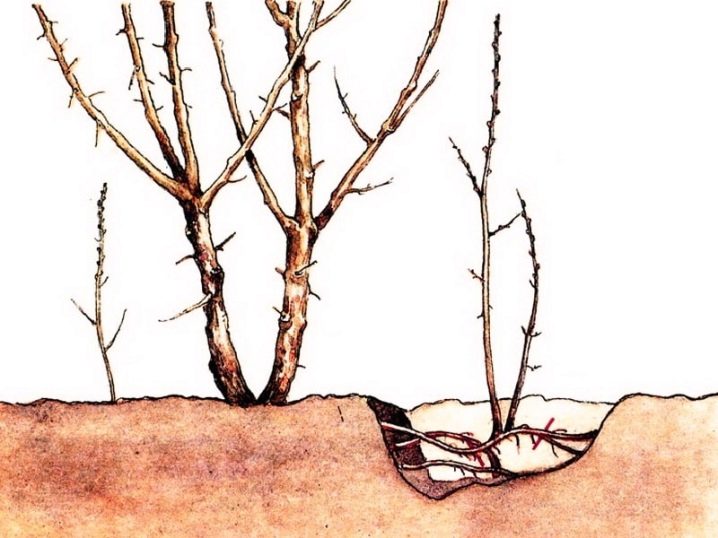
Seeds
The method is good in cases where you can get the bones of the ziziphus. For reproduction, seeds of biologically ripe fruits collected in the fall are suitable. They are sown on seedlings before the first frost appears. After the emergence of seedlings in spring, the shoots must be thinned and grown in a nursery for 2-3 years, regularly watering and wrapping the seedlings for the winter. When the trees form good roots and grow a little, they can be planted in their permanent places in the garden.
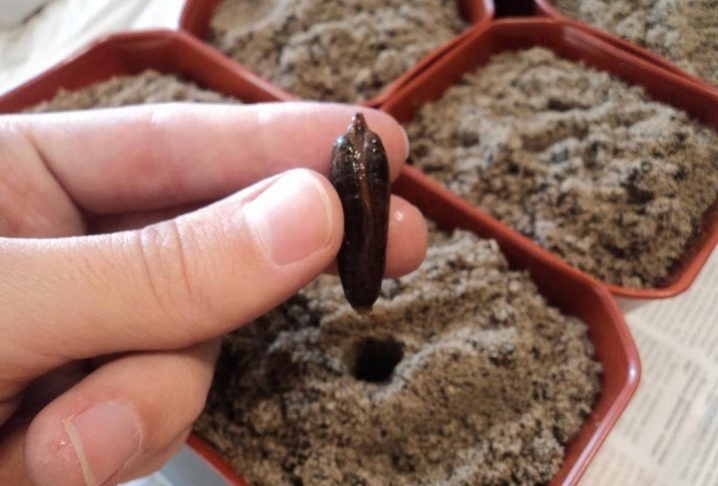
Another method of seed propagation begins with stratification of dates in a refrigerator or basement, where they are stored until spring at a constant temperature above zero degrees. To accelerate germination in early spring, fruits with pulp are steamed with almost hot water (up to +50). After removing the edible part, the bones are again kept in warm water, and then they are planted in moist soil, embedded to a depth of 3 cm and covered with foil.

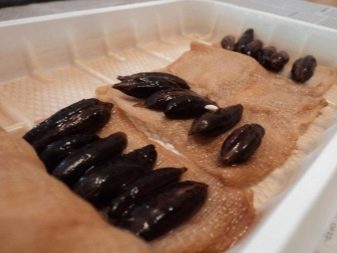
Cuttings
For reproduction, parts of the rhizome of an adult tree are used, which do not exceed 1 cm in thickness. In the spring, the cut pieces of the root are planted in the seedling beds, where tree sprouts will appear in a year.
To obtain a varietal ziziphus with large fruits and abundant yields, you can purchase a grafted tree in the nursery or make a graft yourself, having the necessary experience and materials for this.
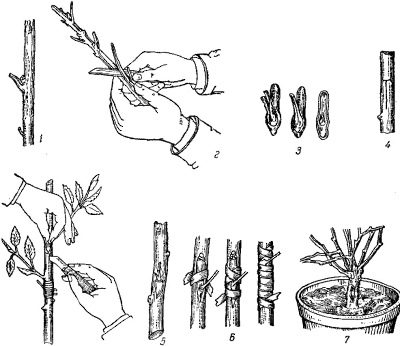
To carry out vaccinations at home, you must choose a period of moderate temperature, which usually occurs in spring or early autumn.
Diseases and pests
The heat-loving tree has good immunity, which is provided in conditions that are closest to natural ones. In the south, ziziphus is considered an undemanding plant that almost does not need special care. However, in too harsh conditions, the tree can infect some diseases, most often caused by rainy and cloudy summers. The plant will benefit more from moderate watering than waterlogging, which can cause fruit rot or leaf spotting. To preserve the ecological purity of useful fruits, you can use folk remedies, and to combat aphids and moths, use ordinary insecticide solutions.
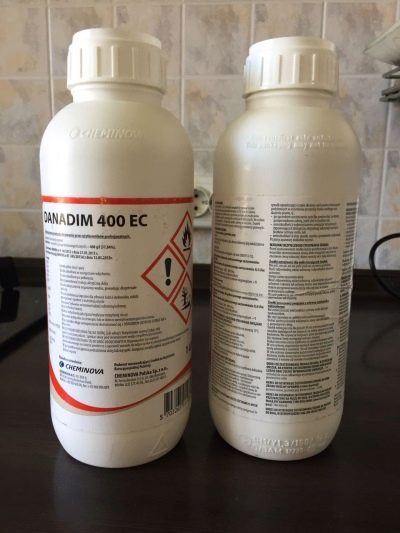
The Chinese date will be less prone to frostbite if you tinker a little with this exotic and wrap it up from the cold. Then you will have to use fewer chemicals and you will be able to grow pure, medicinal berries.
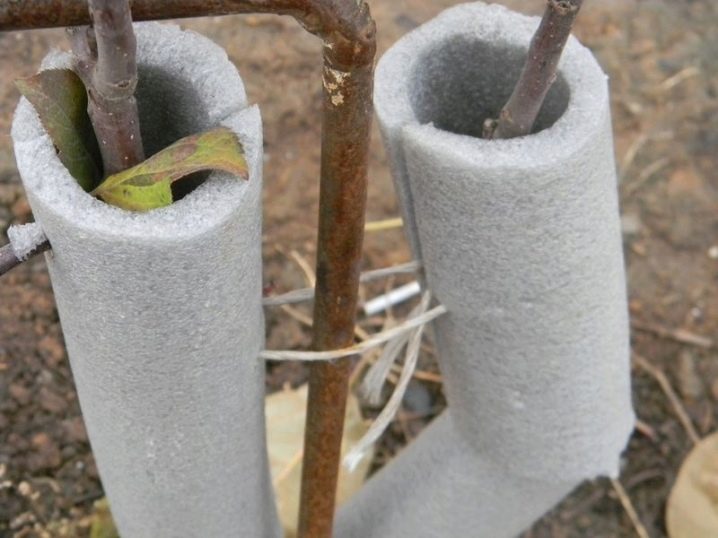






























































The comment was sent successfully.